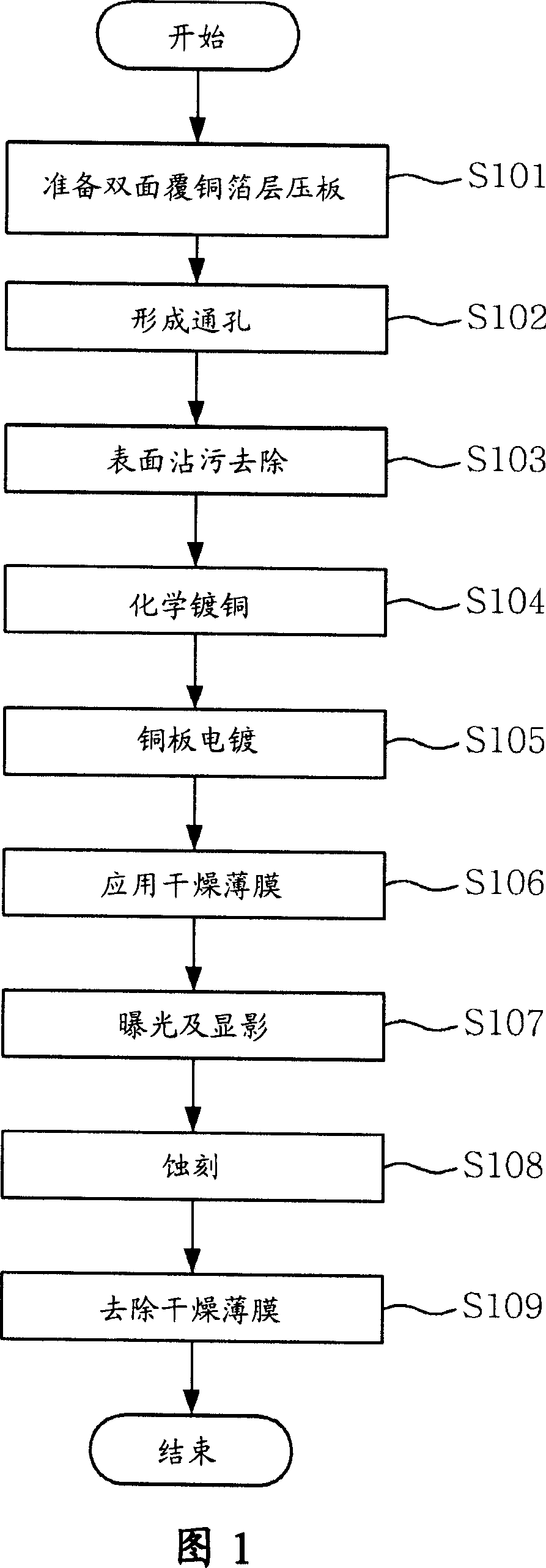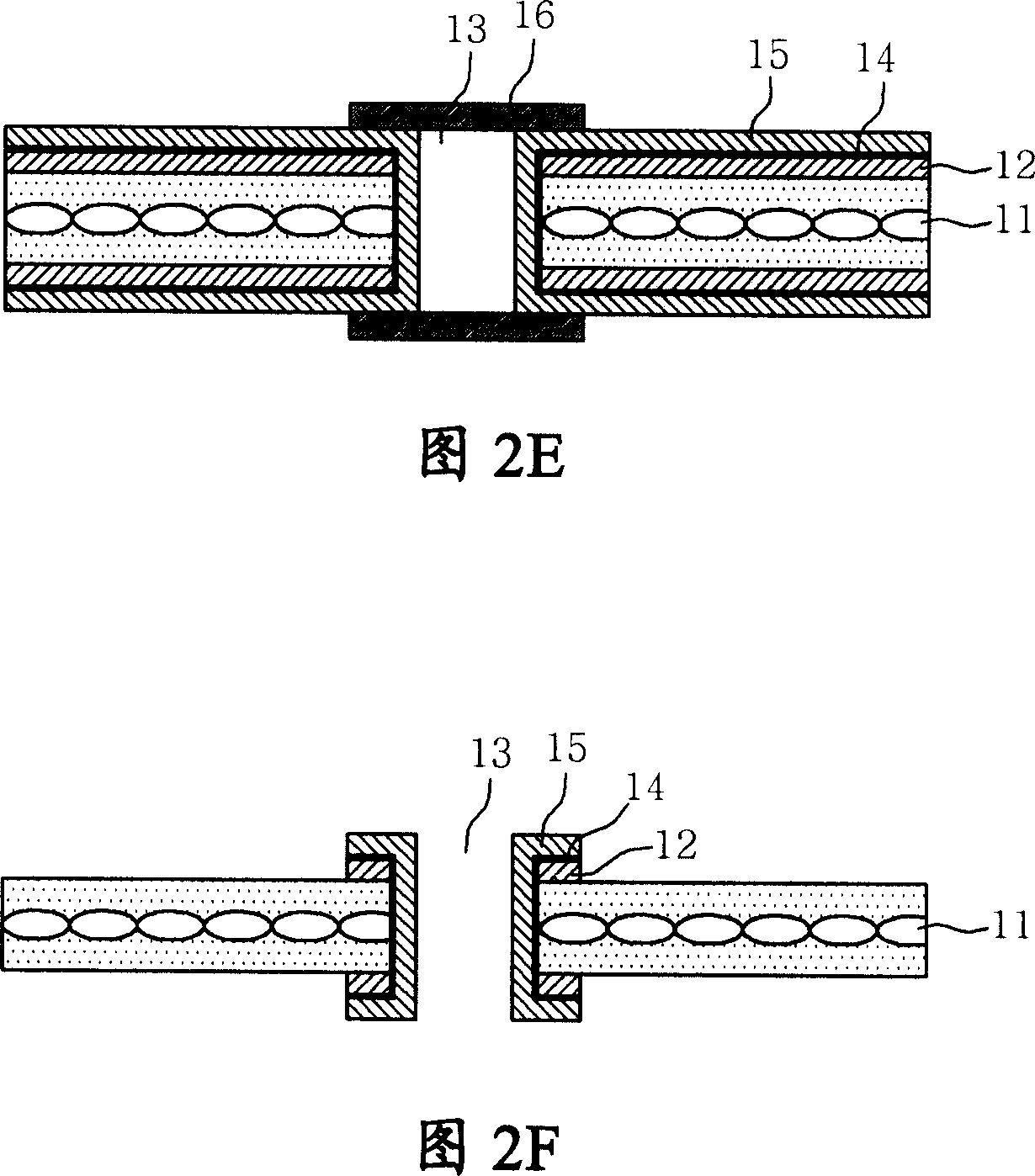Printed circuit board and method of manufacturing the same
A printed circuit board, circuit board technology, applied in the directions of printed circuit manufacturing, printed circuits, printed circuits, etc., can solve the problems of restricting the formation of precision circuits, unfavorable environmental protection, and surface roughness expansion.
- Summary
- Abstract
- Description
- Claims
- Application Information
AI Technical Summary
Problems solved by technology
Method used
Image
Examples
example 1
[0083] The two surfaces of the polymer resin substrate used as the base material are repeatedly coated with PTFE under the conditions of temperature 350-420°C and humidity <RH 50%, so as to form a fluoride ion resin coating with a thickness of about 3 μm. Then, a through hole about 40 μm deep was formed in the substrate, and then an ion beam surface treatment was applied to the substrate using N2 gas under the conditions of an accelerating voltage of about 10 KeV and an ion amount of 2E17. Subsequently, on the surface-treated substrate, a copper layer was deposited to a thickness of about 2 μm using DC sputtering and ion beam sputtering. Finally, a pattern plating process was performed so that the 40 μm deep via hole was filled and a copper pattern plating layer having a thickness of 15 μm was formed.
[0084] The peel strength and surface roughness of the PCBs thus produced were measured. The results are shown in Table 2 below.
example 2
[0086] The two surfaces of the polymer resin substrate used as the base material are repeatedly coated with TPI under the conditions of temperature 250-350 ° C and humidity < RH 50%, so as to form a fluoride ion resin coating with a thickness of about 3 μm. Then, a through hole about 40 μm deep was formed in the substrate, and then an ion beam surface treatment was applied to the substrate using N2 gas under the conditions of an accelerating voltage of about 10 KeV and an ion amount of 2E17. Subsequently, on the surface-treated substrate, a copper layer was deposited to a thickness of about 2 μm using DC sputtering and ion beam sputtering. Finally, a pattern plating process was performed so that the 40 μm deep via hole was filled and a copper pattern plating layer having a thickness of 15 μm was formed.
[0087] The peel strength and surface roughness of the PCBs thus produced were measured. The results are shown in Table 2 below.
PUM
| Property | Measurement | Unit |
|---|---|---|
| Thickness | aaaaa | aaaaa |
| Thickness | aaaaa | aaaaa |
| Thickness | aaaaa | aaaaa |
Abstract
Description
Claims
Application Information
 Login to View More
Login to View More - R&D
- Intellectual Property
- Life Sciences
- Materials
- Tech Scout
- Unparalleled Data Quality
- Higher Quality Content
- 60% Fewer Hallucinations
Browse by: Latest US Patents, China's latest patents, Technical Efficacy Thesaurus, Application Domain, Technology Topic, Popular Technical Reports.
© 2025 PatSnap. All rights reserved.Legal|Privacy policy|Modern Slavery Act Transparency Statement|Sitemap|About US| Contact US: help@patsnap.com



